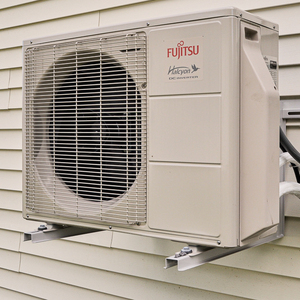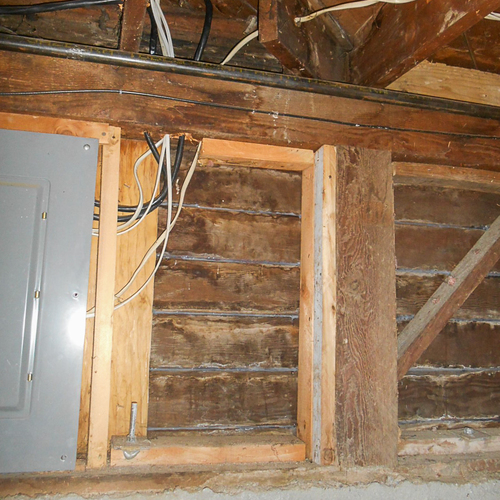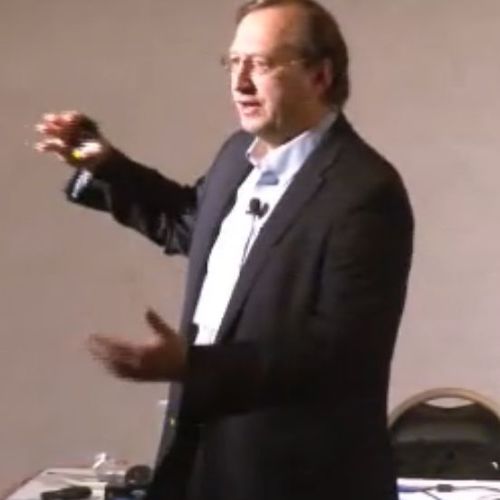
Image Credit: Henrik Bennetsen / Flickr
Last week in my ASHRAE newsletter, I saw an interesting story about a cool thing that Amazon.com is planning to do with heat. Amazon, in case you didn’t know, is a heavy user of computers. Not only do their run their online store but they also have a popular cloud computing service. Computers turn electricity into kitten videos, celebrity tweets, and waste heat. And despite what Facebook and Twitter may have led you to believe, that last one is the most important.
A typical server uses about 350 watts of power and produces about 1,200 BTU/hr of waste heat. (These numbers are from a paper written in 2011, but more about that later.) With 50 servers, you could get as much heat as a 60,000 BTU/hr furnace, but most of the time that heat is not only not used, the owner of the server farm pays to have it removed from the server room with the use of air conditioning — even in cold climates.
Amazon is building a new office center in Seattle, and they’re planning to heat it with waste heat from a nearby server farm. The project is going through the approval process with the local government now, but this would turn around the energy flows and make use of the heat given off instead of using more energy to get rid of it.
Put a “data furnace” in your basement
It’s not a new idea. As long as people have been going into server rooms and feeling the heat, they’ve been talking about what a great idea it would be if you could use that heat. It’s fairly low-grade heat, though, so it wouldn’t be ideal for generating electricity, but is just right for heating buildings… if you can get the heat to where it needs to be. The Amazon plans aren’t out yet, at least not in what I’ve seen, but they’re going to capture the heat in water and move it to their office building.
A few years ago, Microsoft published a paper called The Data Furnace: Heating Up with Cloud Computing, which looked at the possibility of heating homes with servers. They found that it would take 37 to 114 of those 350-watt servers to provide all the heat for homes in five different climates. The owner of the data furnace would net about $300 in savings for each server.
It’s an interesting idea, but I just don’t see that one taking root. What Amazon is doing, though, should represent a new trend. And Seattle is the ideal place to do it because their design temperatures are moderate and they use heat throughout the year. I recall having the heat on and wearing my wool sweater even in July one year when I lived there.
Why not recycle the heat with air conditioning?
Another way to do this is with variable refrigerant flow (VRF) heat pumps. These are the big brothers to minisplits that allow you to do simultaneous heating and cooling, bypassing the outdoor unit of the heat pump altogether. The refrigerant picks up heat in a room that needs to be cooled and sends it to another room that needs to be heated.
Using waste heat from computers reminds me of Martin Holladay’s April Fool’s Day article a few years ago: Researchers Predict U.S. Furnace Industry Is Doomed. In it he wrote that plasma TVs would soon be labeled with their heat output in BTU/hr.
Allison Bailes of Decatur, Georgia, is a speaker, writer, energy consultant, RESNET-certified trainer, and the author of the Energy Vanguard Blog. Check out his in-depth course, Mastering Building Science at Heatspring Learning Institute, and follow him on Twitter at @EnergyVanguard.
Weekly Newsletter
Get building science and energy efficiency advice, plus special offers, in your inbox.















8 Comments
Hmmm...
1194.25 BTU/hr power input, 1200 BTU/hr waste output. Wow!
Response to Antonio Oliver
Antonio,
This phenomenon is not limited to computers. All of the electrical input sent to electrical devices located inside your home is converted to heat. That applies to lighting, blenders, TVs, radios, and refrigerators. If it is drawing 100 watts, it's also dumping 100 of watts of heat into your home.
waste heat temperature
You said that the temperature of the rejected heat was "just right" for heating buildings. I'd like to dig into that a bit.
Hydronic heating coils typically want water to be at least 140F to get any effective heating, up to 180F under full load. Radiant heating systems typically want temperatures in the 110F - 120F range.
I'm having a hard time seeing how you get to those temperatures from server waste heat, unless you're using a VRF system or a heat pump to upgrade the temperature. Practices for server room management have finally started to shift, to permit higher temperatures. But I'm not aware of anyone who runs their servers with 120F+ exhaust temperatures.
Are you aware of how they are making the temperature values pencil out for this project?
Response to Brent Eubanks
When it comes to computing equipment, the exhaust temperature isn't really a big consideration, unless you're to the melting-the-steel-enclosure level. The intake temperature is really the limiting factor.
Most of the servers I work with specify max 35°C intake for continuous operation, 40°C for less than 10% of the operating hours annually, and 45°C for less than 1% of the operating hours annually. Those correspond to approx. 95°F, 104°F, and 113°F. And when you get into the 20kW or greater per rack densities, it's relatively common to measure a 30°F delta from the cold side to the hot side. I'm not sure if we're doing it right now, but we've certainly measured that temperature delta before.
It does take a bit of work, but it can certainly be done. NREL is doing it today, and as a result, they're getting PUE down around 1.06, which is about the lowest in the world.
It's only waste heat if you waste it...
Which is the point here, really.
When you are burning lot of power to perform a useful function there is a substantial energy stream to tap, but 40-50C air is low-temp energy, not useful for many things other than space heating. But where that can be done cost-effectively, it's the right thing to do.
In Seattle that has effectively zero net effect on carbon emissions compared to heating with heat pumps, since the local grid is heavily hydro. But it's way better than heating with gas.
Many electronic components have performance or degraded longevity issues in ambient environments substantially above 50C. I doubt exit air temps substantially above 50C out of server racks won't be typical, but above 40C for sure. 40C is roughly the body temp of an influenza patient, and 40-50C good enough for hot air heating, but would be on the low-temp side for hydronic heating solutions.
Distributing the heat over any distance or between buildings with hot air is fraught with potential distribution losses and system-efficiency issues. It's likely that heat pumps and refrigerant lines would be a more flexible and lower-loss way to go, as Allison suggests. But if the heat is viewed as "free" they might inclined to use a cheaper, if less efficient approach, if the exit temps on the far end are still 40C or higher.
Computer "waste heat"
Wow! Didn't the University of Illinois use the waste heat from its computers to heat the computer building back in the 1960's? That's what I was told when I went to school there about 45 years ago.
Response to Dana Dorsett
You wrote: "In Seattle that has effectively zero net effect on carbon emissions compared to heating with heat pumps, since the local grid is heavily hydro."
That's only true if you don't consider what happens to the hydroelectricity that's not used. Since the Pacific NW exports excess electricity to California, it could end up displacing gas-generated electricity down the line.
response to Allison
The hydro imports into CA from the PNW are primarily during the major part of the cooling season, not during the heating season. During the heating season in the PNW there is low or no cooling loads to speak of in CA, so those imports that drop by at least an order of magnitude. The amount of gas-generated electricity that it's offsetting in CA is slim to none, given the burdened cost of long distance transmission line traded power.
Log in or create an account to post a comment.
Sign up Log in